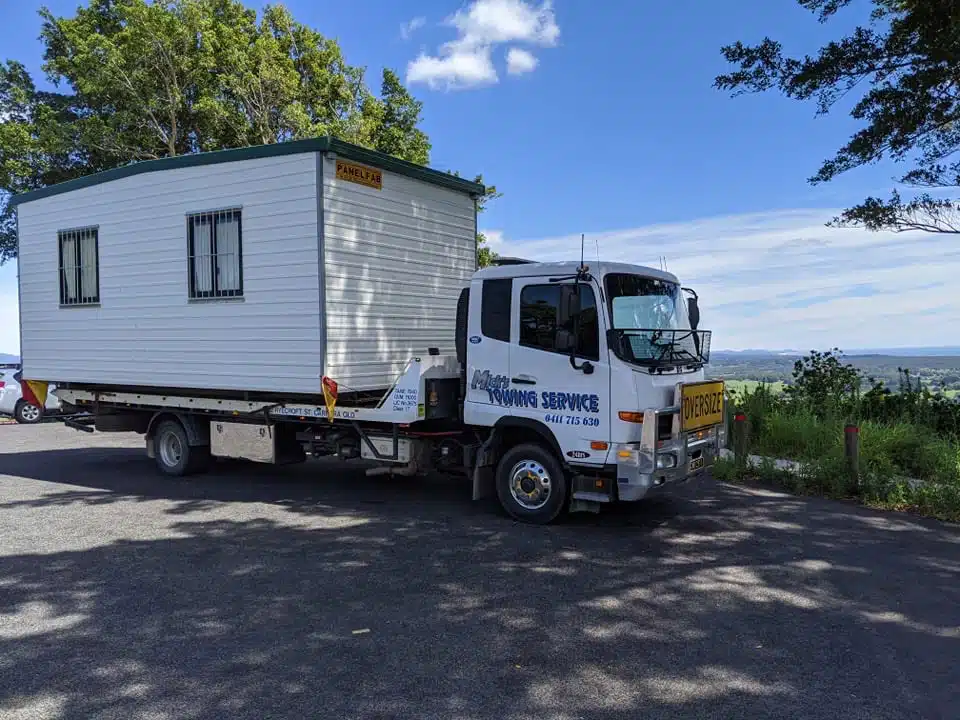Have you ever wondered what it takes to move those towering cranes at construction sites? If you’re involved in government infrastructure, run a business or manage large-scale projects, understanding the types of cranes and their towing requirements is crucial. Not only does it ensure the efficiency of your operations, but it also guarantees safety and compliance with regulations. In this blog, we’ll delve into the various types of cranes and what you need to consider when it comes to towing them.

1. Mobile Cranes
Mobile cranes are the most versatile type, capable of navigating various terrains and conditions. These cranes are mounted on a wheeled chassis and can move independently, making them ideal for jobs that require quick setup and frequent relocations. When towing mobile cranes, it’s essential to consider their weight and the stability of the towing vehicle. Specialised equipment and expertise are needed to transport mobile cranes safely and efficiently. Whether it’s a rough terrain crane or an all-terrain crane, ensuring minimal downtime and maximum safety is crucial.
2. Tower Cranes
Tower cranes are a staple in urban construction, easily recognisable by their tall, slender structure and immense lifting capacity. These cranes are fixed to the ground and are known for their ability to reach great heights and lift heavy loads. Towing a tower crane is a complex process that requires dismantling the crane into manageable sections, which are then transported to the new location.
3. Overhead Cranes
Overhead cranes, also known as bridge cranes, are commonly used in industrial environments. They run along a system of tracks mounted on beams and are ideal for moving heavy loads over short distances within a facility. Although overhead cranes are typically stationary, relocating them requires specialised towing solutions to safely disassemble and transport the structure.
4. Crawler Cranes
Crawler cranes are known for their mobility and stability on rough terrain. These cranes move on tracks, which provide excellent stability and weight distribution. However, their substantial weight and size mean that towing requires a meticulous approach. Disassembling the crane and transporting it in parts is usually necessary to comply with road regulations and ensure safe transport.
5. Rough Terrain Cranes
Rough terrain cranes are designed for off-road applications and are often used in uneven-ground construction sites. These cranes are mounted on four large rubber tyres, providing the stability needed to operate in challenging environments. Towing rough terrain cranes requires understanding their unique design and ensuring the towing vehicle can handle their weight and dimensions.
6. Hydraulic Truck Cranes
Hydraulic truck cranes combine the mobility of a truck with the lifting power of a hydraulic crane. They are highly versatile and used in various industries to lift heavy loads. Towing hydraulic truck cranes involves ensuring that the crane is securely attached to the towing vehicle and that all hydraulic components are protected during transport.
The Importance Of Professional Towing Services
Understanding the specific requirements for towing different types of cranes is essential for the success and safety of any project. Professional towing services provide the expertise, equipment and experience needed to transport these massive machines efficiently. Teams are equipped to handle the complexities of each crane type, ensuring compliance with all safety regulations and minimising downtime.
Optimise Your Crane Transport With Our Expert Services
Towing cranes requires specialised knowledge and equipment to ensure safety and efficiency. At Mick’s Towing Service, we offer comprehensive towing solutions tailored to the unique needs of each crane type. From mobile and tower cranes to overhead and crawler cranes, our experienced team ensures that your equipment is transported securely and promptly. Whether you need towing or heavy towing on the Gold Coast, trust us to do the job right. Contact us today to learn more about our expert towing solutions.



